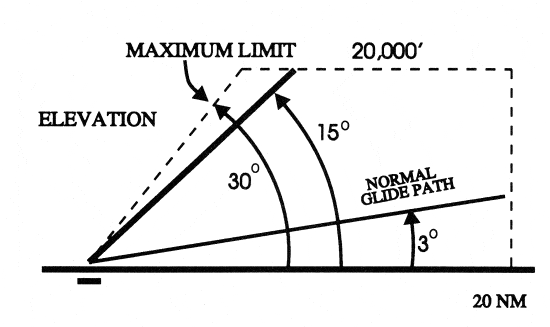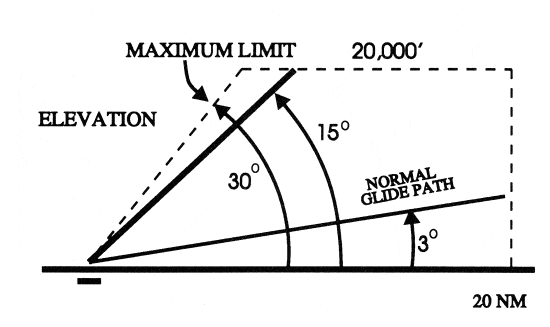ILS is by far the most commonly available instrument approach available in North America and Europe. The precision and ubiquitous infrastructure of this system make it ideal for instrument approaches.
In the late 1970s and early 1980s, a prospective replacement for ILS emerged in the form of a system known as the Microwave Landing System (MLS).
The reason behind a replacement being sought for ILS systems was due to a number of operational challenges being faced.
Advantages of MLS
The reasoning behind MLS being developed and subsequently selected as a suitable system to replace ILS was due to numerous advantages being identified with the system over ILS. Such advantages include:
- Higher capability and guidance in regard to weather conditions – aircraft could be provided with greater assistance in adverse weather conditions – lower DH and MDAs could be met.
- Lower interference with other navigation stations in the vicinity – this was predominantly due to the high frequency bands which MLS operates on.
- Further Range – MLS could be recieved by aircraft at up to 20,000 feet.
- Size – MLS stations are significantly more compact when compared to ILS infrastructure.
- Higher degree of coverage – the angles covered by MLS around a runway are far greater to that of the narrow beams transmitted by ILS, this increases the area coverage for aircraft around the airport.
- Angle/incline gradient for ILS is typically at a 5 degree maximum, for MLS it can be up to 30 degrees.
These advantages combined provide arriving aircraft with greater operating margins in terms of weather and position; in which the approach could be intercepted from a high variety of angles relative to the arrival runway.
In comparison, ILS has a number of disadvantages which initially made MLS an attractive replacement.
Disadvantages of ILS
During the time period in which MLS was being developed, ILS had already been in circulation for more than 40 years (the early ILS systems date to the mid-1920s). Over these 4 decades, the system had evolved to be a precise and reliable instrument approach system.
ILS could be found at most major airports around the world by the 1970s and 1980s. Despite this proven system, there are also some drawbacks to ILS:
- Potential for interference from nearby navigational stations – due to the lower frequency band in which ILS operates, there is potential for interference if stations are positioned incorrectly. This is especially true for localizer stations.
- Glideslope component is dependent on surrounding terrain on the approach path – terrain and obstacles surrounding the airport can interfere with the glideslope and lead to potential operational limitations.
- ILS ground infrastructure is bulky – consumes a large amount of airport real estate.
- The narrower beam projected by ILS means there is a relatively low area coverage for aircraft to intercept.
Difference Between ILS and MLS
ILS only utilizes 40 channels while MLS can operate across 200. This coupled with the higher frequency band of MLS means there is a higher degree of accuracy when using this system. There is also a significantly higher area of coverage in both a vertical and horizontal aspect when compared to that of ILS.
The components which comprise each respective system are also completely different. ILS uses Glideslope (vertical) and a Localizer (lateral) for directional guidance. These components send beams that correspond to the runway centreline and approach angle. The MLS is comprised of time-based calculations, approach elevation and degree measurements in relation to the range and approach angle.
Use of MLS
Despite the extensive research and development surrounding MLS throughout the 1980s and 1990s, the system was not implemented at many airports worldwide. Following a cost analysis, it was concluded that the advantages which the system offered did not justify the exponentially higher cost of implementation to that of the existing ILS systems available at airports.
There were some operational systems in use throughout the 1990s and into the 21st Century, most of which have since been decommissioned. A noticeable example is the MLS installed at London Heathrow, UK. As of June 2017, this system has been decommissioned.
Since the development and testing of MLS, many airports have implemented GPS and Area Navigation (RNAV) technology instead.
This is primarily due to costs associated with installation and maintenance; GPS and RNAV can be implemented at an economically feasible rate. These systems typically complement existing ILS systems installed at airports.
They provide backups for facilitating instrument approaches in the event the ILS is inoperative.

After visiting more than 60 countries, I have probably been on every type of plane there is and visited countless airports. I did my very first international solo trip to South Africa at the age of only 16 and haven’t really stopped traveling since.
Despite the adventurous travel itch, I do have a nerdy side as well – which is satisfied by writing about all things aviation “too boring” for my regular travel blog.

